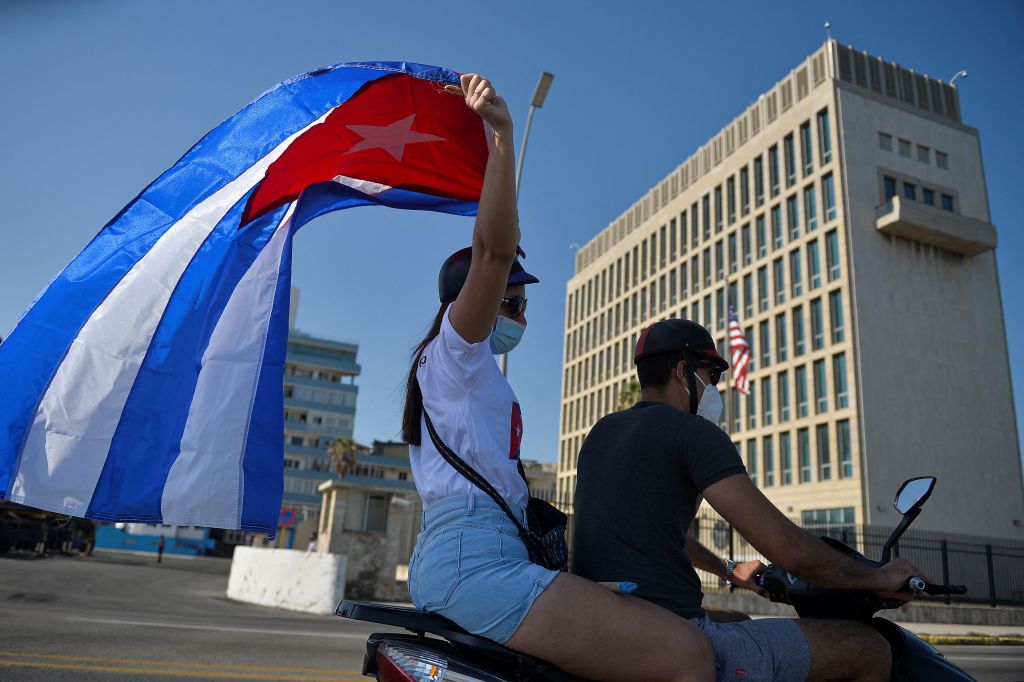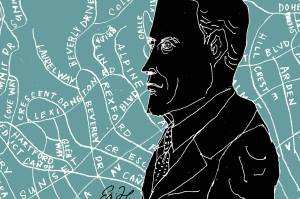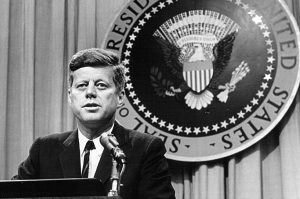In late 2016, an official at the US Embassy in Cuba woke up in the middle of the night with a ‘severe pain and sensation of intense pressure in the face’. He also felt ‘a loud piercing sound in one ear…and acute disequilibrium and nausea’. A report by the National Academy of Science reported the official was left with, ‘symptoms of vestibular and cognitive dysfunction’, or in simpler terms, left totally dazed and confused.
What happened? Five years later, and with over 200 similar cases reported by American diplomatic personnel around the world, mystery and conspiracy theories swirl around the so-called Havana syndrome. As of May 2021, over 200 American government staff have been diagnosed, and the latest examples are alarmingly close to home. Last November, a National Security Council official walking in the Ellipse Park, just south of the White House, came down with symptoms. A few weeks later and another member of staff, exiting the White House, was suddenly taken seriously ill, needing immediate hospitalization. This month, the Biden administration has announced a renewed push across government agencies, to try and find the root cause.
Within weeks of the first American embassy staffer falling ill in Cuba in late 2016, over two dozen more US personnel in Havana were diagnosed with similar symptoms, including hearing mysterious ‘mechanical’ sounds, blinding migraines, nausea and inner-ear problems, affecting balance and co-ordination. According to the NAS review, the ‘constellation of acute clinical signs and symptoms with directional and location-specific features… [are] unlike any disorder in the neurological or general medical literature… [and] are consistent with the effects of directed, pulsed radio frequency (RF) energy.’
In 2017, then-director of the CIA Mike Pompeo, exacerbated the already-tense relationship with Cuba by repatriating most of the embassy’s staff, ostensibly for further tests and treatment, and closing the building down. A State Department insider from 2017-2018, confirmed to The Spectator that Pompeo was sorely rattled by the mushrooming cases. ‘Pompeo said he wanted a full investigation,’ the source tells us. ‘He said, “They’re telling me it might just be an illness; it might be microwaves, it might be something worse, can someone just tell me what the fuck is happening?”’
No one could. Over the course of 2017 and 2018, further occurrences of the syndrome in intelligence officers and White House staff, popped up in China, London, Syria and Russia. One victim, Marc Polymeropoulos, then a senior CIA officer, described how he fell sick while on duty in Moscow in 2017. He had to retire in 2020, suffering crippling headaches, like many others complaining of Havana syndrome symptoms.
‘I was woken up in the middle of the night with an incredible case of vertigo,’ he told the Guardian. ‘My head was spinning, incredible nausea, I felt like I had to go to the bathroom and throw up. It was just a terrifying moment for me. I had tinnitus, which was ringing in my ears, and the vertigo was really what was incredibly debilitating. I really wasn’t sure what was happening. I couldn’t stand up. I was falling over.’
As a result of all this, the US government is itself now suffering something of a collective vestibular dysfunction. Since the syndrome was first identified, political, scientific, and medical authorities have argued and speculated over the ominous fundamental question: is the US under attack by a mystery, invisible weapon that targets random service personnel?
Sens. Mark Warner and Marco Rubio of the Senate Intelligence Committee have vowed to get to the bottom of the matter. ‘This pattern of attacking our fellow citizens serving our government appears to be increasing,’ they announced in May. ‘The Senate Intelligence Committee intends to get to the bottom of this’.
Washington DC lawyer and campaigner Mark Zaid represents eight patients suffering chronic after effects of the syndrome, and has been fighting for years to get them fair access to government healthcare. He too, is still baffled. ‘I want to know what’s going on,’ he says. ‘I want to know who’s doing this, and whether my government is covering this up.’
While Zaid is ambivalent about the possible causes of the sickness, he claims to have evidence from a 2014 NSA memo that officials in Washington knew of a ‘directed energy device’, most likely from the Cold War-era USSR. He speculates that it has been deployed as some sort of revenge for covert US intelligence ops in the 1950s and 1960s.
‘I think it’s been going on since the late 1960s, early 1970s, there is evidence of that,’ he says. ‘We have a memo that says the NSA knows of a foreign adversary, and that country has a microwave weapon that could be used to maim or kill.’
And the National Security Agency memo released in 2014, two years before the Cuban affair does indeed speculate on the existence of ‘a high-powered microwave system weapon… designed to bathe a target’s living quarters in microwaves, causing numerous physical effects, including a damaged nervous system.’ It also reports that the authors ‘felt that many of the distinctive and acute signs, symptoms, and observations reported by [government] employees are consistent with the effects of directed, pulsed radio frequency energy,’ adding that previous research published by both Western and Soviet sources provides ‘circumstantial support for this possible mechanism.’ But with frustratingly little confirmed fact, again, there’s little to go on again.
‘Stunning as [the NSA memo] was,’ says Zaid. ‘It didn’t have anything to do with causality — and that was what I needed’.
Into this fact-vacuum spring conspiracy theories. Russia is most often blamed, given the USSR’s known development of microwave weaponry and surveillance tech during the Cold War. But given the Russian state has been occupied with several other diversions in recent years concerning its own dissidents and internal enemies, the rationale for a seemingly random series of attacks on American personnel seems unlikely. Perhaps the offender lies further east of Moscow.
‘From my study of how China works, I would certainly not discount it,’ says Ian Williams, journalist and author of Every Breath You Take: China’s New Tyranny, a study of China’s surveillance state. Williams points to a 2020 incident in the disputed territory of Ladakh along the Chinese border, where, according to a Beijing academic, microwave weaponry was used by Chinese military to clear an area of Indian troops.
‘In 15 minutes, those occupying the hilltops all began to vomit,’ said Jin Canrong, Renmin University professor of international relations. ‘They couldn’t stand up, so they fled. This was how we retook the ground.’
But, as Williams points out, this incident was never formally confirmed by the Chinese authorities, who usually bristle with pride in their technology. Neither does the blanket assault of microwave weapons (‘a beautiful weapon’ according to Canrong) fit into the established pattern of Havana syndrome occurrences worldwide. Williams also mentions the fact that the seemingly random and illogical progression of attacks also discounts a concerted strategy of attack.
‘Maybe it began as a surveillance mechanism, something that started out as triggering surveillance before they figured out, it’s also a weapon’ says Zaid. ‘Say, the Soviets had learned, oh this tech causes headaches, nausea and temporarily incapacitate an individual — what a great way to be a pain in the ass nuisance to the enemy!’
Cheryl Rofer, a chemist who worked at the Los Alamos National Laboratory for more than three decades has discounted the possibility of the syndrome being caused deliberately by a weapon. ‘Extraordinary claims require extraordinary evidence, and no evidence has been offered to support the existence of this mystery weapon,’ she wrote in a recent edition of Foreign Policy. ‘If a directed microwave beam hit people’s brains, we would expect to see visible effects on the skin and flesh. None of that has accompanied Havana syndrome.’
‘She raises good questions’ counters Zaid. ‘But she’s not someone in the intelligence community. She’s as much to blame with the problem as the people who are extolling [the theory that] it’s microwave weapons. Neither of them knows what they’re talking about. They just have pieces of the puzzle.’
Away from the spats between science, law and politics, the medical community has been developing theories of its own. Stuart Ritchie, a lecturer at the Institute of Psychiatry, Psychology and Neuroscience at King’s College London has researched the phenomenon in some depth and like Rofer, is skeptical that there is sophisticated, deliberate weaponry at work. He has another theory.
‘The idea of a special new weapon that can be aimed at individual people and makes them develop neuropsychological symptoms seems rather far-fetched,’ he says. ‘There are some aspects of the story — such as the fact that cases multiplied after the staff were informed about the “attacks” by one of the higher-up diplomats, that implies that the seed of the idea was put into people’s heads and the symptoms followed. So, it seems to me that we shouldn’t rule out a psychological explanation in favor of a technological one here.’
Ritchie’s view that some sort of mass hysteria has caused Havana syndrome is compelling. He points out that most victims were working in stressful and often tense environments, in China, Cuba and Russia, under increased pressure, due to the Trumpian fluctuations in policy. In an era when foreign nations were frequently presented as threats or enemies, American personnel were tense, anxious, and increasingly aware of their safety. Reports from the embassy in Havana in 2016 describe the growing sense of panic and fear as the belief that staff were being deliberately attacked, by a sonic weapon began to spread. One staffer reported that during the first wave of ‘attacks’, people had become too afraid to sleep, fearful that they and their families would be attacked during the night.
And as the authors of Havana Syndrome: Mass Psychogenic Illness and the Real Story Behind the Embassy Mystery and Hysteria, medical experts Robert W. Baloh and Robert E. Bartholomew make a strong case for the ‘psychogenic illness’ theory, comparing it to historic afflictions such as shell-shock or PTSD. They claim that the mysterious noises heard by sufferers in Havana were caused by the exceptionally noisy crickets and cicadas indigenous to the island.
Whatever the root cause — and it certainly seems, on balance, unlikely to have been a foreign attack — what is immediately of concern is the fact that intelligence at State Department level is hypothesizing sinister attacks caused by malicious foreign powers, using Cold War-era microwave technology. Were this to be proven beyond all reasonable doubt, it raises a chilling question. Are we on the verge of a new era of covert warfare, with states conducting clandestine assaults on individuals? That would present an even more frightening scenario. How would we retaliate?


















